9 Weird, Wonderful and Otherworldly Forests On Planet Earth

Get news, updates, & event Info delivered right to your inbox:
Some forests have to be seen to be believed
From eerie Australian lyrebirds, natural mimics that can repeat nearly any sound they hear, to the pouty Galapagos red-lipped batfish haunting equatorial oceans deep, the discerning observer knows that nature can stranger than fiction.
While bright red lips on a deepwater fish may seem unnecessary, scientists surmise it has to do with reproduction, helping this species identify potential mates amongst all the fish in the sea. And thats just one example of how species sometimes adapt to their environment in bizarre and mind-bending ways.
Fans of all things weird and wonderful will be pleased to know that trees and forests are no exception to this. So, in the spirit of the unusual, here are a few of the most amazing trees and forests you’ll want to believe in.
Discover 9 Weird and Wonderful Forests That Could Be Straight Off of Another Planet
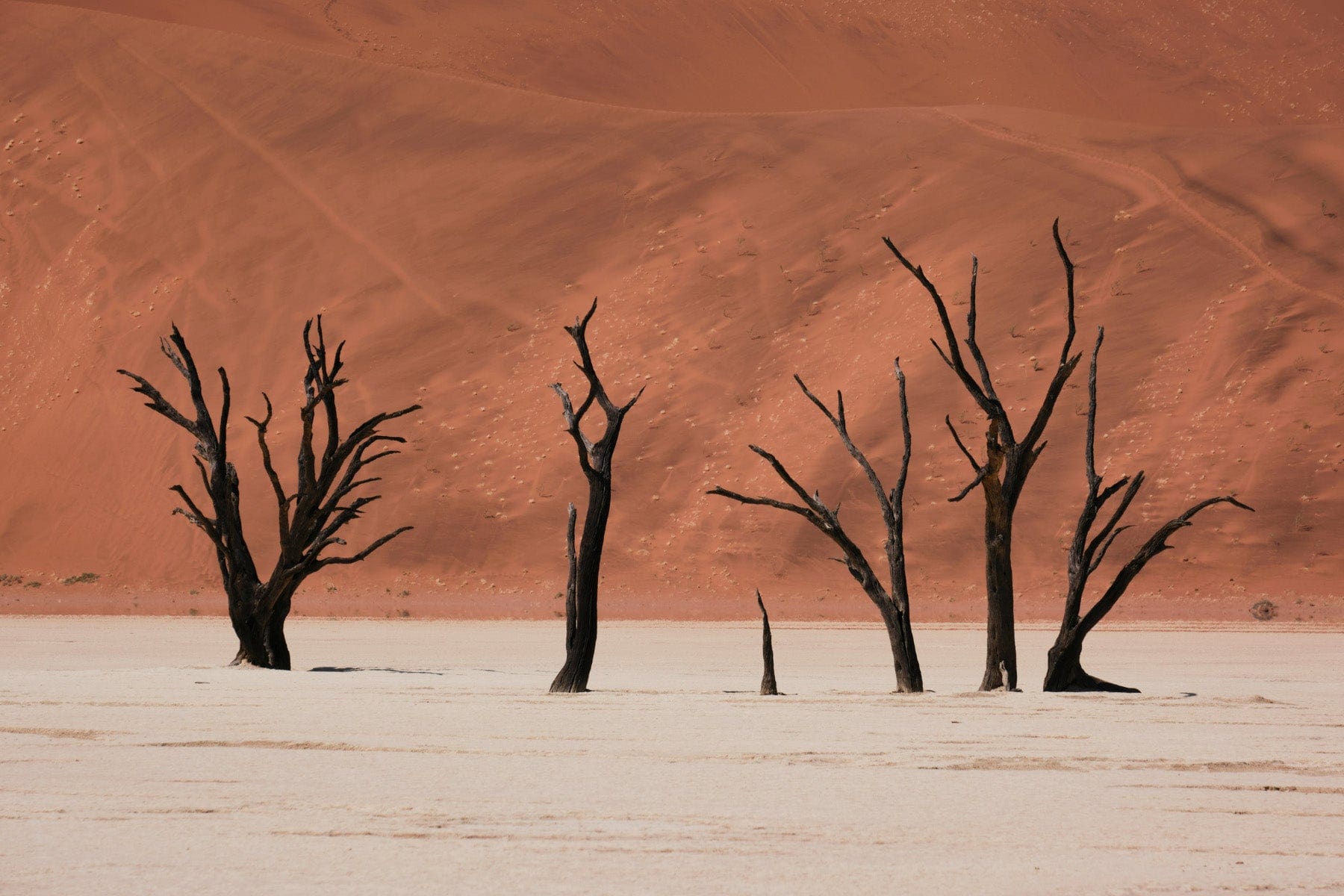
1. Deadvlei, Namibia
Though technically not a living forest, the trees of the Deadvlei in Namib-Naukluft Park in Namibia are a strange sight to behold. Deadvlei, which means ‘dead marsh’, is a clay pan surrounded by some of the highest sand dunes in the world. Centuries ago, these dunes filled with water when the nearby river flooded, allowing trees to grow in the middle of the desert. About 900 years ago, the area completely dried up, leaving just the ‘corpses’ of these trees behind. In fact, the climate is so dry, the trees can't decompose. After hundreds of years spent baking in the hot desert sun, they are scorched and blackened like an eerie post-apocalyptic wasteland.
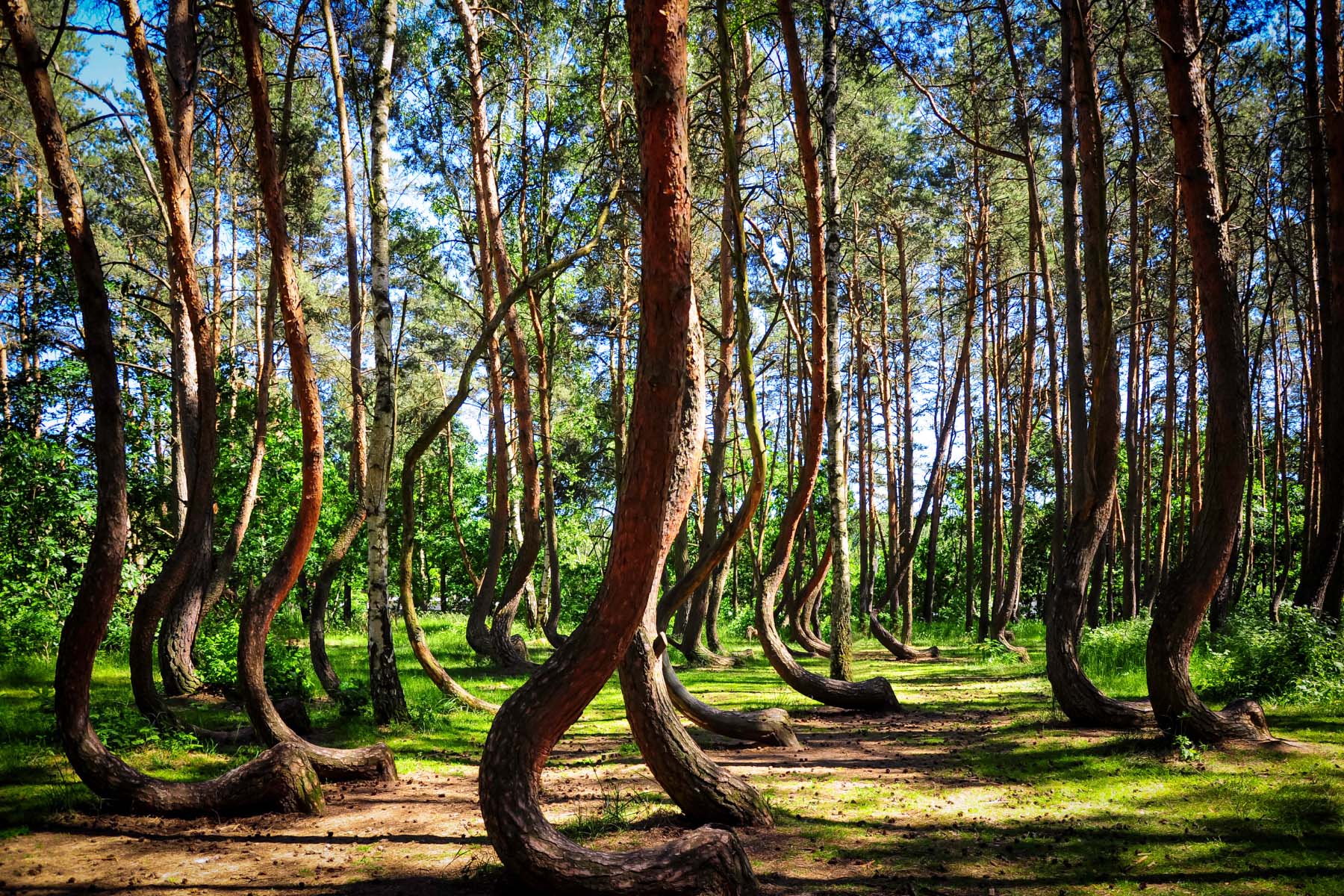
2. Crooked Forest, Poland
You’ve obviously seen trees that grow straight up. You may have even seen trees that grow at an angle. But have you ever seen trees that grow in a near perfect semi-circle? That’s what you'll find in a section of forest outside the small town of Gryfino, Poland. Around 400 pine trees have grown in the shape of a slanted J, all of them with the belly of the J pointing North. Even stranger: they're surrounded by other trees that are happily growing in the old fashioned manner. From tanks rolling over them during WWII, to a strange gravitational pull, to humans bending the trees themselves to make curved wood for boats, many theories have been posed. But in the end, no one really knows why they've grown this way.
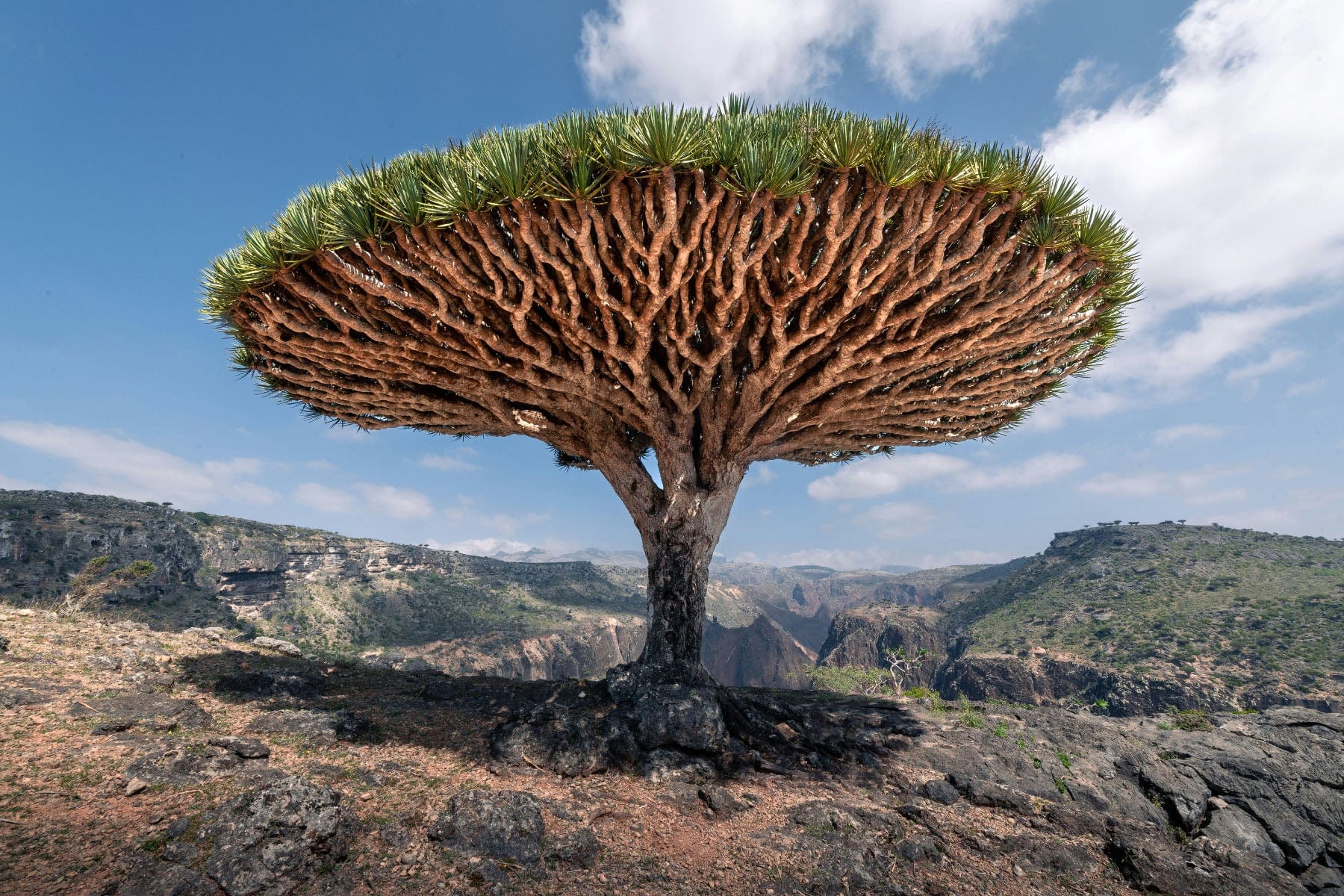
3. Dragon Blood Trees, Yemen
Trees that bleed red? Now that’s straight out of the Twilight Zone. The Dragon Blood trees on the Yemeni island of Socotra are one of the most unique and abstract looking vegetative species on the planet. Their umbrella shape, made up of thick, plentiful branches, make the trees look like gigantic, dried-out broccoli crowns sprouting from the desert landscape. The trees get their name from the blood red resin they produce, which has been ground into a fine powder for paint, pottery glaze, makeup and nail polish, and as a medicinal ointment and elixir ingredient, for hundreds of years. Pretty amazing, right?
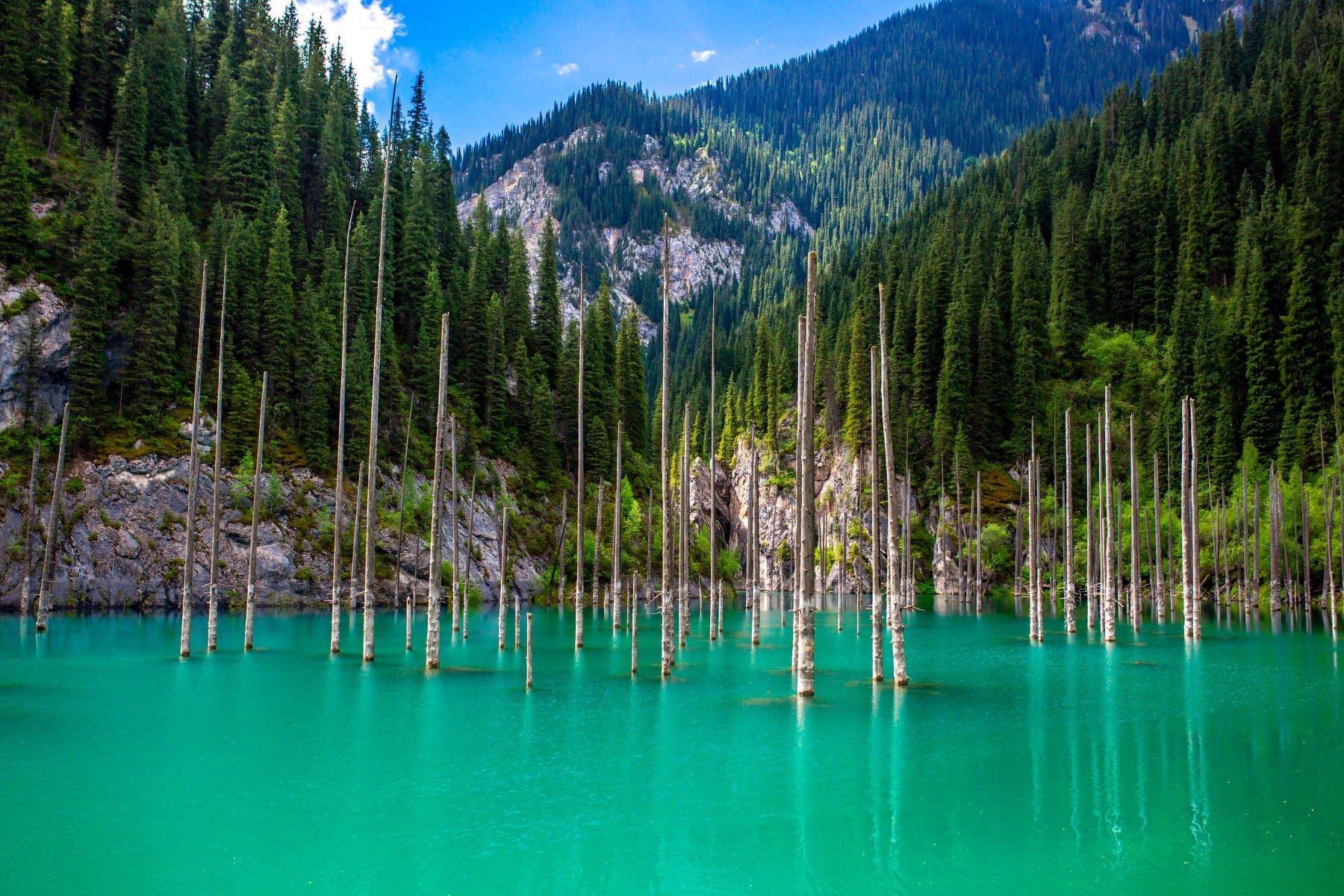
4. Sunken Forest, Kazakhstan
Kind of the exact opposite of the Deadvlei, the Sunken Forest in Kazakhstan is made up of tree trunks jutting out of Lake Kaindy’s surface. After a landslide caused by an earthquake in 1911 formed a natural dam, rain and river water from the surrounding mountains filled the newly formed lake and drowned the trees. Now all that remains above the water are limbless tree trunks protruding skywards like an installation of telephone poles. However, below the water’s surface, a whole new habitat has grown. The submerged portion of the trees are now covered in algae and other water plants, creating the illusion of a dense underwater forest. One habitat lost, another gained!
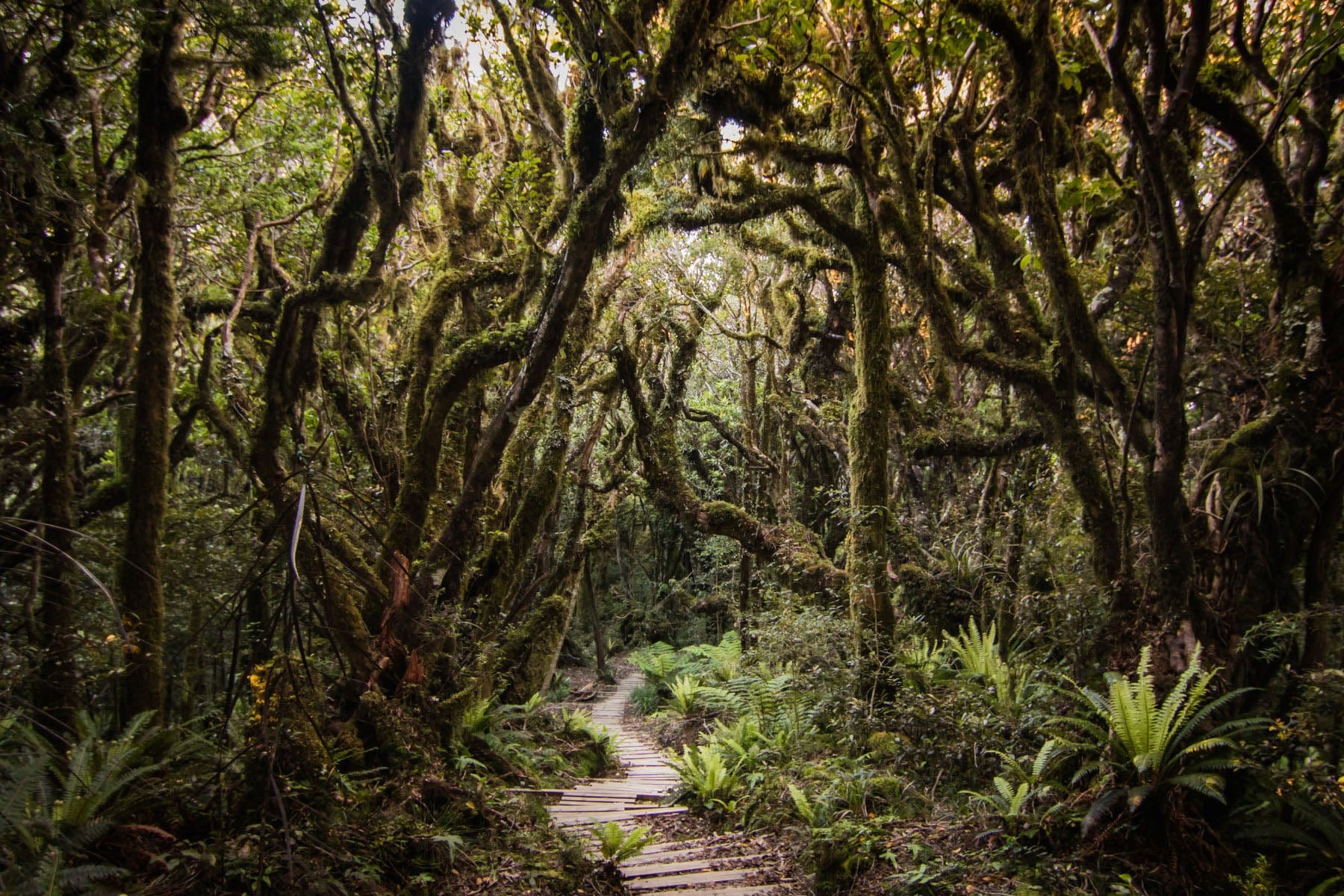
5. Goblin Forest, New Zealand
New Zealand is a fantastical land of mountains, forests, and some of the most incredible biodiversity — like hobbits! No, not really. But they do have a Goblin Forest! The Goblin Forest on New Zealand's North Island is straight out of a fairy tale. The twisted and gnarled branches of the native Kamahi trees are almost completely engulfed by moss, liverworts, ferns and other hanging vegetation. Sitting at the base of Mount Taranaki, a volcano that last erupted over 200 years ago, the forest's trees have grown through and around other trees that were destroyed during past volcanic eruptions. Scientists have estimated a 30-50% chance of Mount Taranaki erupting again in the next 50 years.
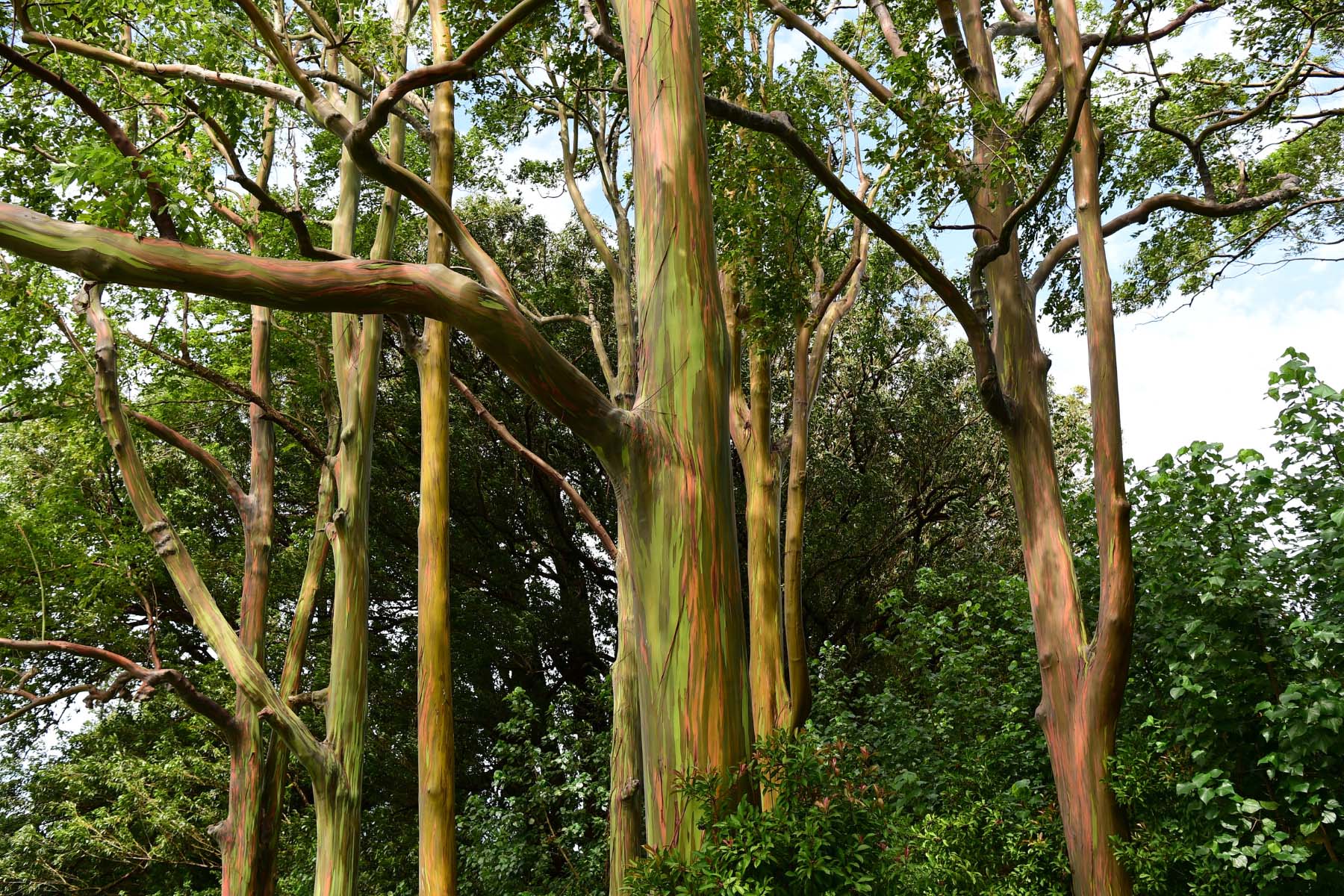
6. Rainbow Eucalyptus, Papua New Guinea, Indonesia and the Philippines
Native to the rainforests of the Philippines, Indonesia and Papua, New Guinea, Rainbow Eucalyptus trees are almost too beautiful to be real. With striking multicolored bark that could be straight out of a Dr. Suess book, they're truly a sight to behold! An evergreen with spear-shaped, silvery-green leaves and tiny white flowers, these trees have multi-colored inner bark that displays in shades of green, red, orange, gray and purple-brown. As the tree's outer bark grows, it peels away in strips to reveal new colors and create new patterns underneath. In their native environment, these trees can grow to over 250 ft tall.
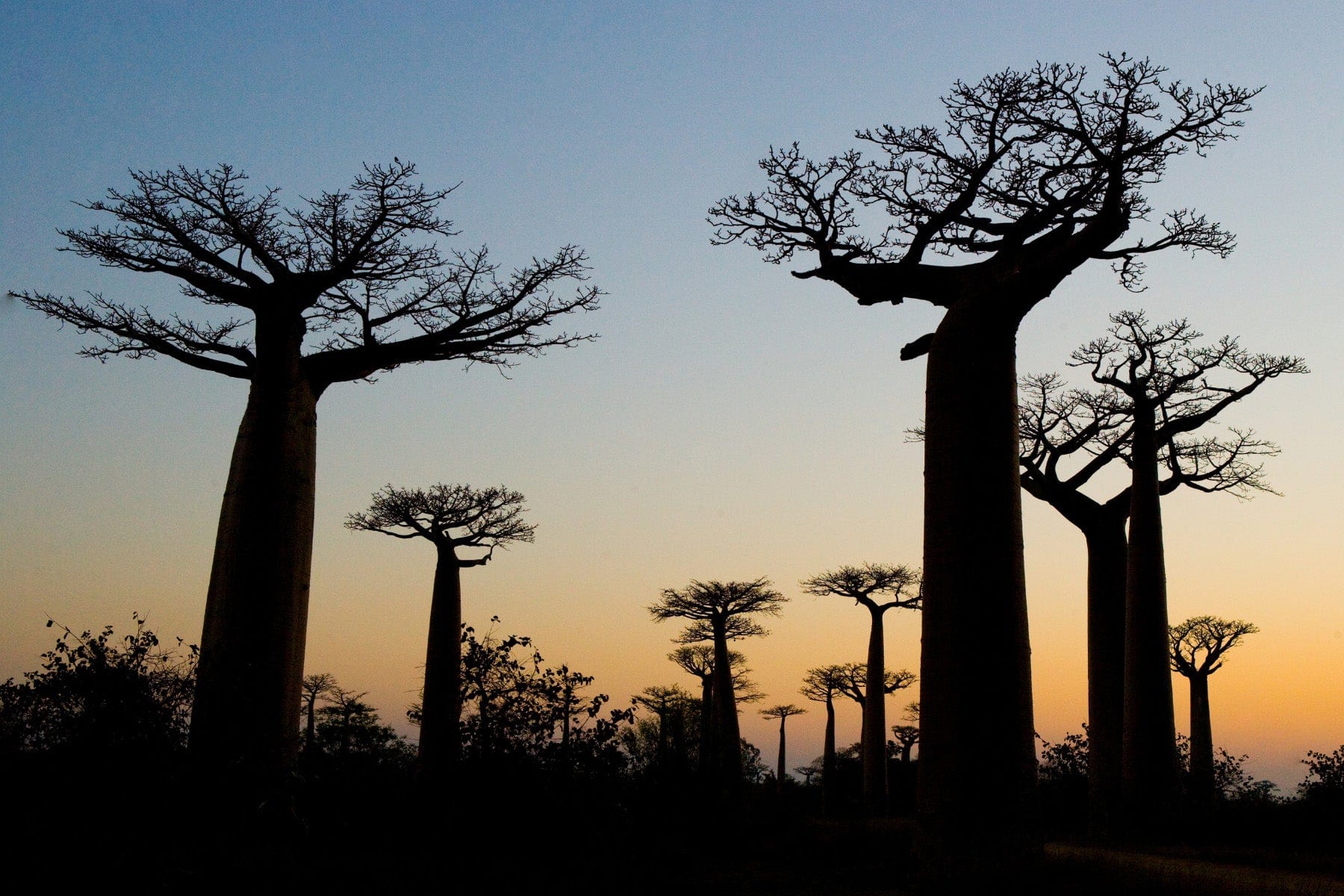
7. Avenue of the Baobabs, Madagascar
Towering above like massive pillars leading to an otherworldly castle, Madagascar's Grandidiers baobabs line the dirt road between Morondava and Belon’i Tsiribihina in the Menabe region of western Madagascar. The "Avenue of Baobabs," as it's known, is considered the most beautiful road in Madagascar. These massive ancients — many are over 800 years old with trunks over 150 feet around — create a scene so beautiful and unique that they attract visitors from across the globe. In addition to being truly majestic, Baobab trees share plentiful resources: their trunks can be tapped harmlessly for water during the dry season, their young leaves can be eaten in salad, and their fruits contain a nutritious pulp that is consumed across Africa as part of a popular summertime beverage.
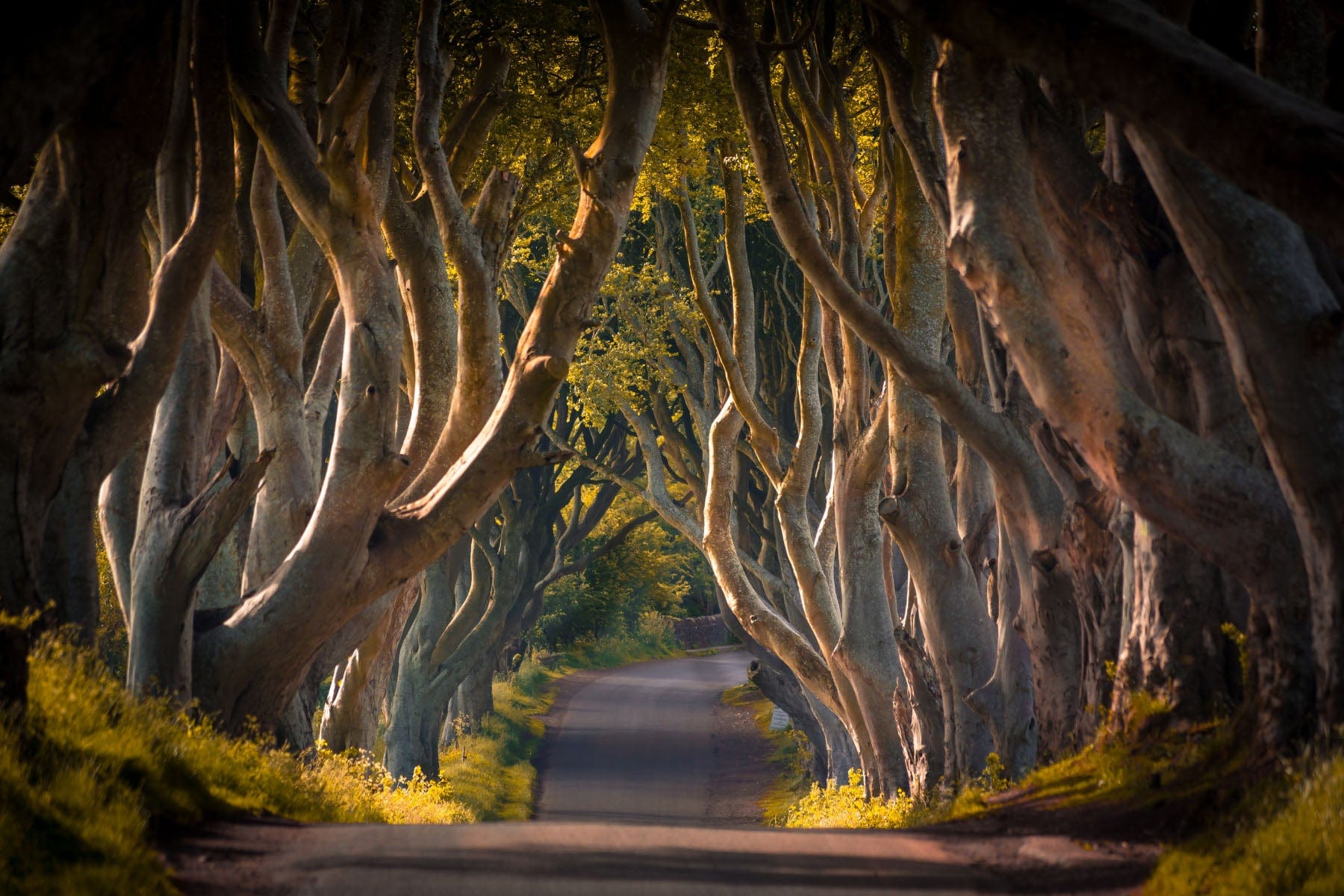
8. Dark Hedges, Northern Ireland
This tunnel of beech trees found in County Antrim, Northern Ireland gives off some seriously spooky vibes. Planted by the Stuart Family in the 18th century to impress visitors (welcome and unwelcome) approaching the Georgian mansion Gracehill House, they certainly make an impression. Taking their spooky nature to another level, the Dark Hedges are featured in HBO's Game of Thrones, where they represent the Kingsroad — the road connecting Kings Landing with Castle Black.
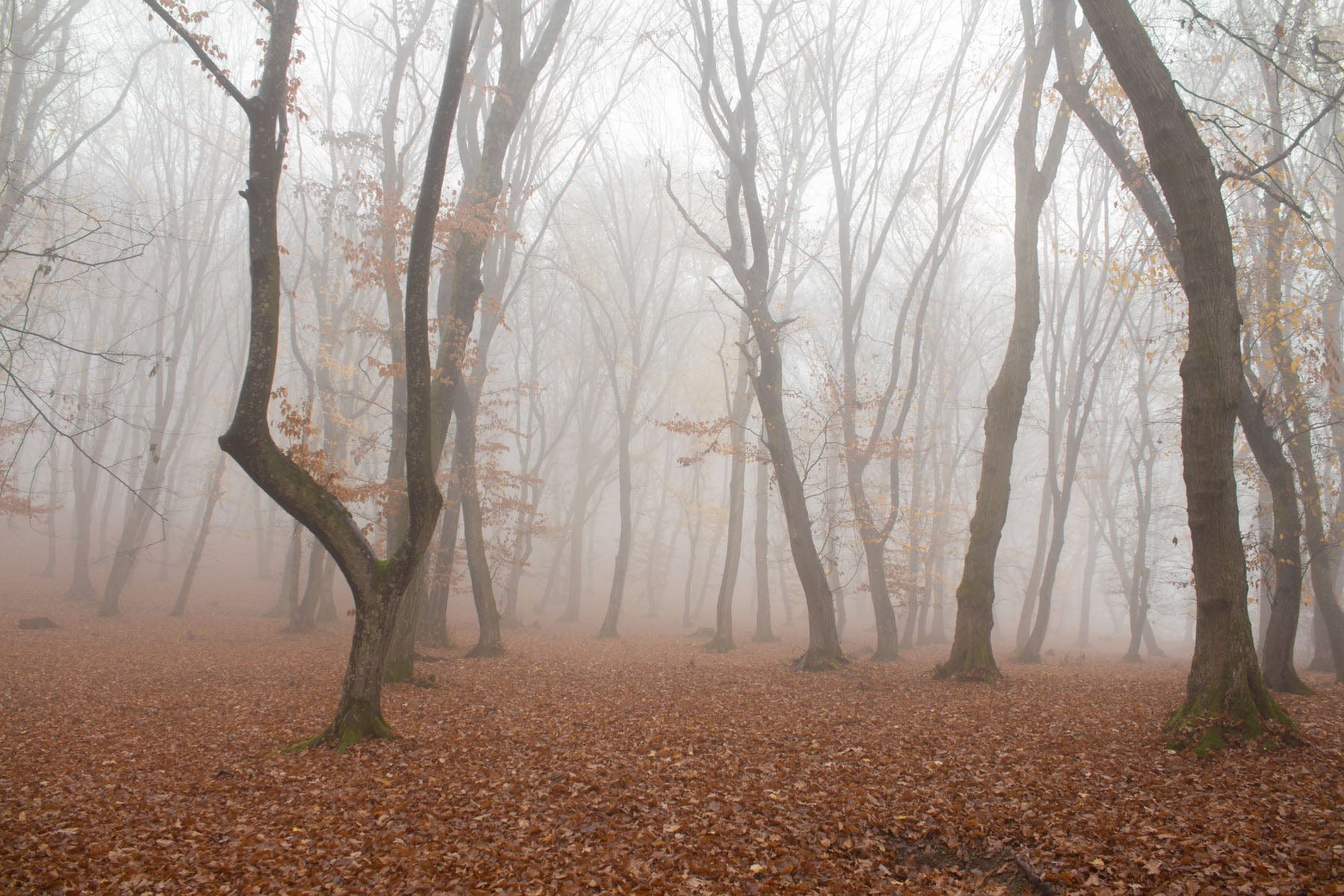
9. Hoia-Baciu Forest, Romania
Considered to be the "most haunted forest in the world", the Hoia-Baciu forest, or the "Bermuda Triangle of Romania" is located to the west of the city of Cluj-Napoca, near the open-air section of the Ethnographic Museum of Transylvania. Filled with warped trees that lend it an eerie atmosphere, the forest has captured the imagination of people for centuries. According to local legends, ghosts and spirits lurk among the trees. In one tale, a young woman disappear within the spooky grove and reappear five years later with no recollection of where she had been, a la Rip Van Winkle. And that's not the only legend of people vanishing within the grove. With lore like that, it's no wonder thrill seekers from around the globe visit for spooky forest adventures.
Plant a Tree to Help Keep Nature Weird
The forests of Earth truly are amazing, and this list only scratches at the surface of the weird and wonderful world of nature's diversity. You don't have to look far to find more of the beautiful oddities Mother Nature has to offer.
Though not nearly as strange, our planting projects around the world make sure the forests of the world offer just as much awe-inspiring nature as New Zealand's Goblin Forest, or Sunken Forest of Kazakhstan. Want to help keep nature weird? Plant trees today!
Get news, updates, & event Info delivered right to your inbox:
Related Posts
9 Sustainable New Years Resolutions
18/12/2025 by Meaghan Weeden
Inspirational Quotes About Trees
16/12/2025 by Meaghan Weeden
The 9 Oldest, Tallest, and Biggest Trees in the World
11/12/2025 by One Tree Planted
Popular On One Tree Planted
Inspirational Quotes About Trees
16/12/2025 by Meaghan Weeden
The 9 Oldest, Tallest, and Biggest Trees in the World
11/12/2025 by One Tree Planted
What Causes Deforestation?
10/07/2025 by Meaghan Weeden
Fundraising Disclosures

Be Part of the
Restoration Movement
The Grove is more than just a monthly giving program: it's a vibrant community of individuals who are dedicated to reforestation and environmental restoration on a global scale.
As a member of The Grove, you affirm your commitment to restoring forests, nurturing biodiversity, and fostering positive global change.



